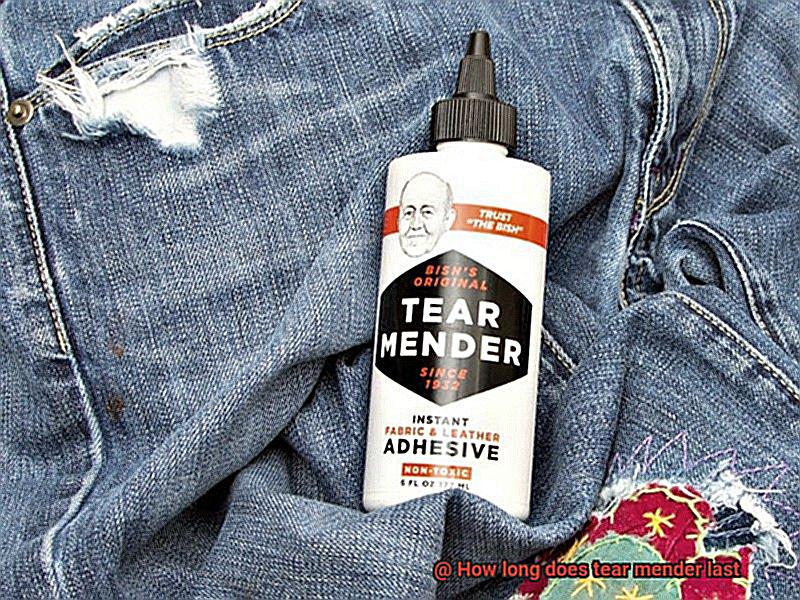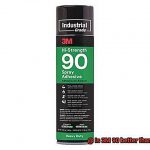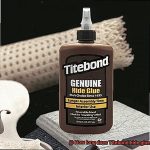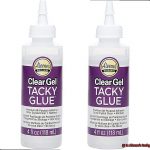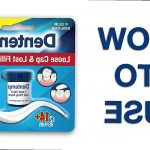Have you ever found yourself in a tight spot, desperately needing to fix a tear or hole in your favorite clothing? We’ve all been there, frantically searching for a quick and reliable solution.
Well, fear not. Tear Mender adhesive is here to save the day.
Contents
This stuff is like magic, seamlessly repairing fabric tears and holding them together like nothing else. But, let’s talk about the burning question on everyone’s mind: how long does Tear Mender actually last?
So, grab a cuppa and get ready for all the answers you’ve been longing for.
What is Tear Mender?
If so, Tear Mender is the adhesive you need to fix those mishaps quickly and effectively. Tear Mender is a versatile fabric and leather adhesive that can repair tears, holes, and other damages in various materials. In this blog post, we will explore what Tear Mender is, its uses, and how it works.
Versatility and Bonding Properties:
Tear Mender is renowned for its strong bonding properties and its versatility in fixing a wide range of items. It can be used on materials such as fabric, leather, rubber, and vinyl. Unlike many other adhesives that harden and become stiff over time, Tear Mender remains flexible even after drying. This flexibility makes it perfect for repairing items that require movement and flexibility, such as clothing, upholstery, or outdoor gear.
Fabric Repairs:
Often referred to as “fabric glue,” Tear Mender excels at mending fabric-related issues. It can repair torn seams, fix holes in garments, or even attach patches to clothing. The strong bond it creates ensures that the repaired area remains intact even with regular use and washing.
Leather Repairs:
Tear Mender is also ideal for repairing leather items like jackets, bags, shoes, and furniture. Whether the material is genuine or synthetic leather, Tear Mender’s adhesive properties work effectively to create a durable bond that withstands stretching and bending.
Rubber and Vinyl Repairs:
In addition to fabrics and leather, Tear Mender is commonly used for repairing rubber or vinyl items. It can fix inflatable toys, rubber boots, or vinyl upholstery effortlessly. The strong bond created by Tear Mender ensures that the repaired area can withstand stretching and bending without coming apart.
Quick-Drying and Water-Resistant Formula:
Tear Mender’s quick-drying formula is a time-saver. Once applied to the damaged area, it typically dries within minutes, allowing for efficient repairs without long waiting times. This feature makes Tear Mender convenient for both small fixes and larger projects. Additionally, Tear Mender is designed to be water-resistant and can withstand various weather conditions. Items repaired with Tear Mender can safely be exposed to rain or moisture without compromising the integrity of the bond.
Longevity and Removal:
When applied correctly, Tear Mender creates a permanent bond that can last for years. However, it is important to note that the repaired area may still be susceptible to future damage or wear over time. Factors such as frequent washing, exposure to harsh conditions or chemicals, and excessive strain can affect the longevity of the repair. If needed, Tear Mender can be removed using solvents or adhesive removers recommended by the manufacturer.
Factors Affecting the Durability of Tear Mender
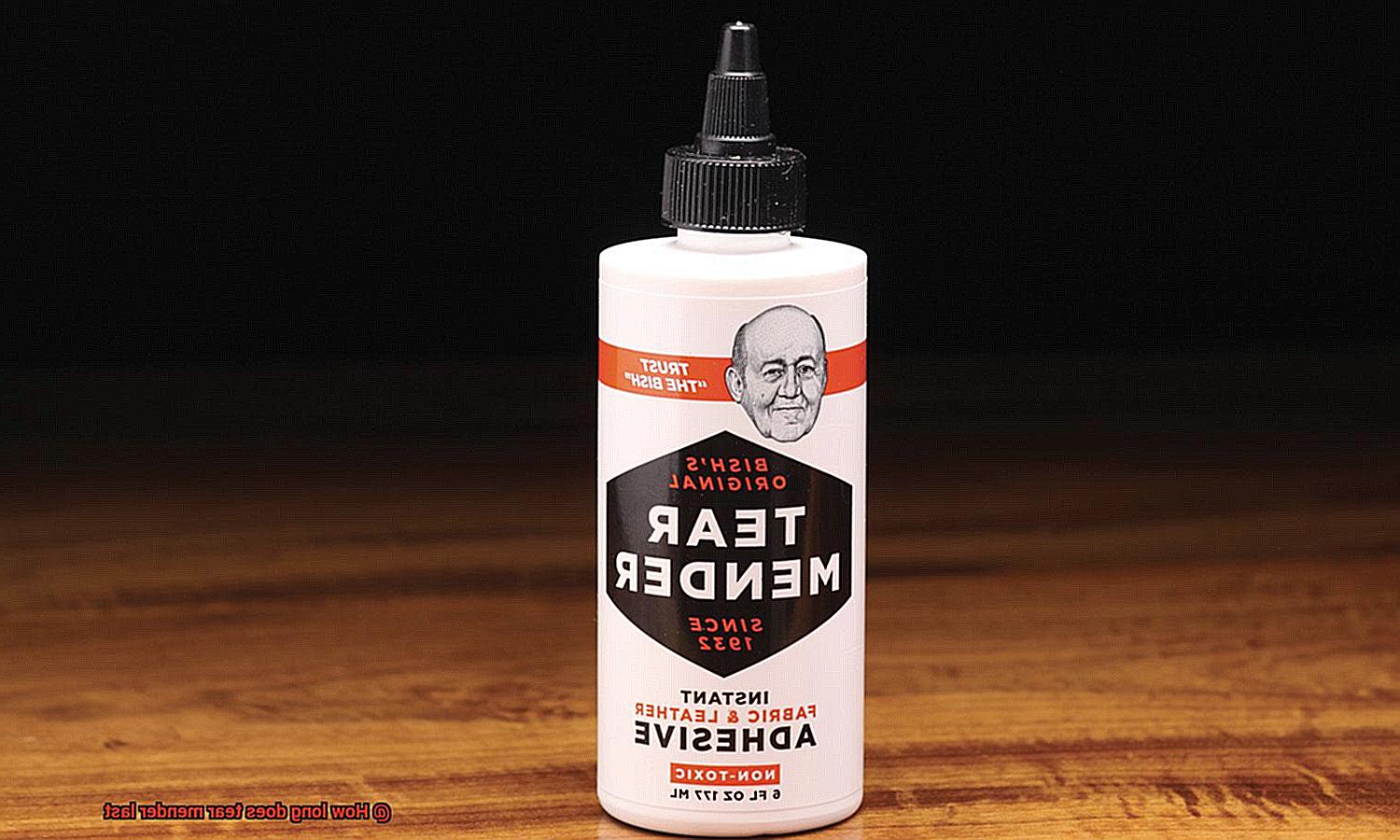
Tear Mender, the superhero in a bottle that rescues your favorite pair of jeans or beloved jacket from tears and mishaps, is truly a lifesaver. However, the durability of Tear Mender repairs depends on several factors. Let’s dive into the research and unravel the secrets behind its longevity.
- Material Type: The type of material being repaired is crucial in determining Tear Mender’s durability. While it forms a strong bond with natural fibers like denim, cotton, leather, and canvas, synthetic materials such as silk or nylon may not bond as effectively.
- Surface Preparation: Proper surface preparation is key to a long-lasting repair. Ensure that the surface is clean and free from dirt, oil, or other contaminants that hinder adhesion. Additionally, lightly roughening or scuffing the surface promotes better bonding.
- Application Technique: How you apply Tear Mender can impact its durability. Apply a thin, even layer of adhesive to both surfaces and allow it to dry for a few minutes before firmly pressing them together. Applying too much adhesive or not allowing sufficient drying time can result in a weak bond.
- Environmental Conditions: Temperature and humidity affect Tear Mender’s performance. Apply the adhesive within the recommended temperature range to avoid compromising its bonding capabilities. Extreme temperatures or high humidity levels can interfere with the bonding process.
- Stress and Strain: The level of stress and strain on the repaired area can impact Tear Mender’s durability. While it provides flexibility for some movement, excessive stretching or pulling weakens the adhesive over time. Use proper care to avoid placing excessive stress on the repaired material.
- Maintenance and Care: Regular maintenance and proper care significantly extend Tear Mender repairs’ lifespan. Follow the manufacturer’s guidelines for cleaning and care to preserve the adhesive bond. Avoid harsh chemicals, excessive heat, and abrasive cleaning methods that can damage the repaired area.
By considering these factors and taking necessary precautions, you can ensure maximum durability for your Tear Mender repairs. Although Tear Mender is renowned for its strong bonding capabilities, remember that individual results may vary due to various influencing factors.
How to Apply Tear Mender for Optimal Results
Tear Mender is a powerful adhesive that can work wonders in repairing tears, rips, and other damages in fabric and leather materials. To ensure optimal results and a long-lasting bond, it’s important to follow the correct application steps. In this article, we will guide you through the process of applying Tear Mender for optimal results.
Prepare the surface:
Before applying Tear Mender, thoroughly clean the surface you’re repairing to ensure a strong bond. Use a mild detergent and water to gently wash away any dirt or debris. Allow the area to dry completely before moving forward. This step is crucial as it ensures that the adhesive bonds effectively and creates a durable repair.
Shake the bottle well:
To evenly distribute the adhesive inside, vigorously shake the Tear Mender bottle before using it. This simple step guarantees consistent results throughout the application process, ensuring every repair is strong and reliable.
Apply a thin layer of Tear Mender:
Using the brush applicator attached to the cap, carefully apply a thin layer of Tear Mender to one of the surfaces you want to bond. Resist the temptation to slather on excessive adhesive as it can lead to messy seepage and uneven bonding. A thin, even layer is more than enough for a robust and long-lasting bond.
Press the surfaces together firmly:
After applying Tear Mender to one surface, immediately press both surfaces together with firmness. Align them accurately and hold them tightly for a few seconds. This crucial step establishes a powerful bond between the materials, ensuring your repair stays intact.
Allow sufficient drying time:
To achieve optimal results, allow the repaired area to dry undisturbed for at least 3-6 hours before handling or using it. For maximum strength and durability, leaving it untouched overnight is recommended. This ample drying time ensures that Tear Mender fully cures and creates a lasting bond.
How Long Does Tear Mender Last?
When it comes to repairing fabric and leather materials, Tear Mender is the go-to adhesive known for its strong and flexible bond. But how long can you expect this bond to last? In this comprehensive guide, we will explore the factors that influence Tear Mender’s longevity.
From material type and application method to environmental conditions and maintenance practices, we’ll provide expert insights to help you maximize the durability of your repairs and enjoy long-lasting results.
Factors Affecting Tear Mender’s Longevity:
Material Type:
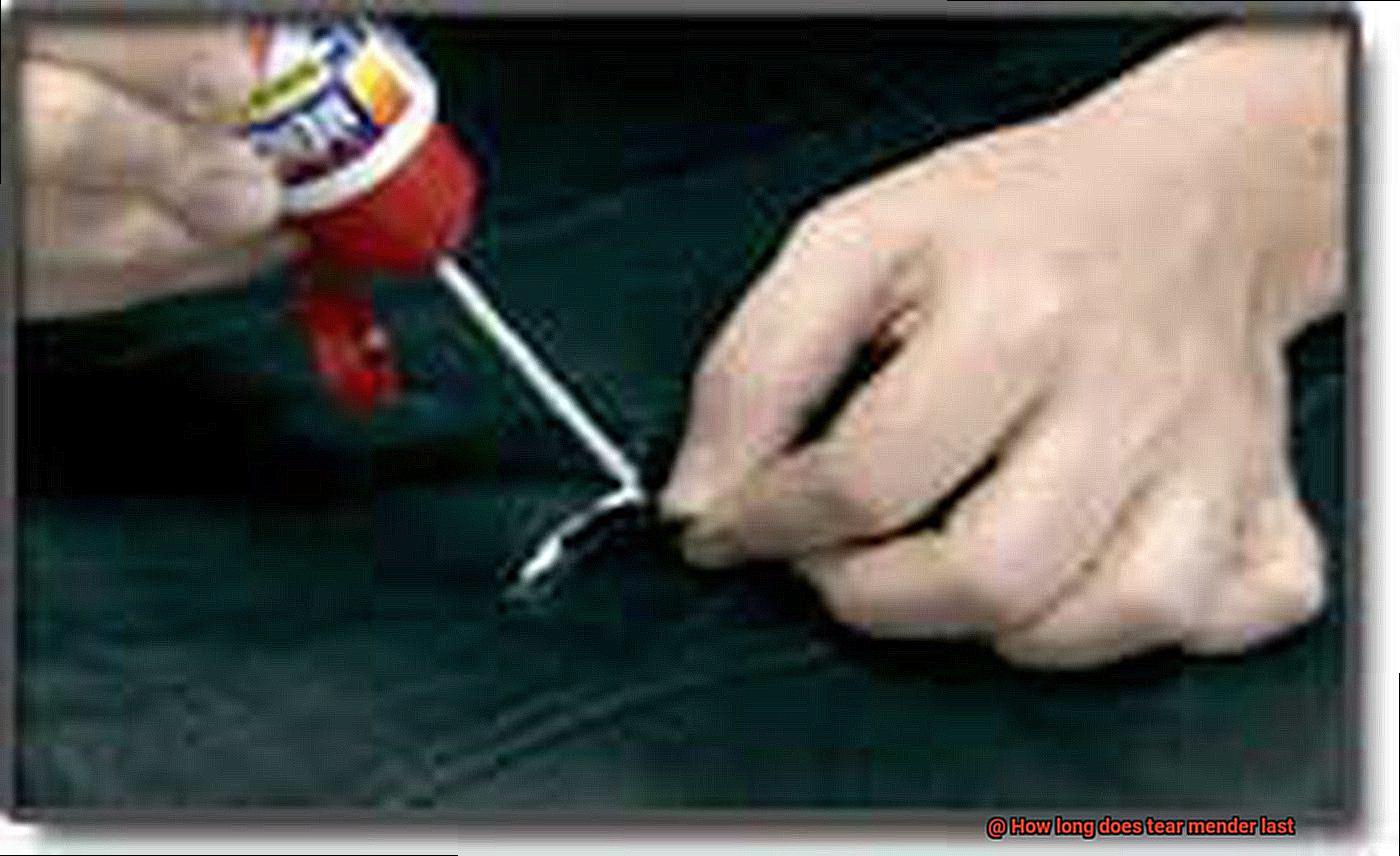
The type of material being repaired plays a significant role in determining the lifespan of Tear Mender’s bond. Fabric repairs tend to have a longer duration since they experience less stress and strain compared to leather or vinyl. Nevertheless, Tear Mender has been specifically designed to withstand regular wear and tear on all types of materials, ensuring a reliable bond.
Application Method:
Achieving a durable bond starts with proper application. Before using Tear Mender, ensure the surface is clean and free from dirt, oils, or other contaminants that may hinder adhesion. Shake the bottle vigorously to thoroughly mix the adhesive. Apply a thin layer of Tear Mender on both surfaces and firmly press them together. This step is crucial in creating a strong connection between the materials and enhancing bond longevity.
Environmental Conditions:
While Tear Mender boasts excellent resistance to washing and drying cycles, extreme environmental conditions can impact its durability over time. Prolonged exposure to high temperatures or continuous contact with water may weaken the bond. To prolong Tear Mender’s lifespan, avoid subjecting repaired items to excessive heat or prolonged immersion in water.
Maintenance Practices:

Regular inspection and proper maintenance are essential for preserving Tear Mender’s bond. Routinely check the repaired area for signs of weakening or damage. If any issues are detected, take prompt action to reinforce the repair, such as adding stitching or using patches. By following the manufacturer’s instructions for care and maintenance, you can extend the lifespan of the bond and ensure long-lasting results.
Tips for Making Repairs Last Longer
Well, we’ve got a solution for you. Tear Mender glue is renowned for its durability and long-lasting bond. By following these expert tips, you can ensure that your repairs stand the test of time, saving you both time and money. Let’s delve into the details.
Prepare Surfaces with Precision:
To achieve a lasting repair, it is crucial to meticulously clean and prepare the surfaces needing attention before applying Tear Mender glue. Rid the area of dirt, grease, or grime using a mild detergent and water. Allow ample time for the surfaces to dry completely before applying the glue. This meticulous preparation ensures optimal adhesion and maximizes the longevity of your repair.
Precision in Application:
Applying the right amount of Tear Mender glue is paramount in achieving a strong bond. Use smooth, even strokes to apply a thin layer of glue to the surfaces being repaired. Excessive amounts of glue can weaken the bond and lead to untidy repairs. Consult the product label for recommended quantities and follow them diligently for optimal results.
Patience is Key:
Allowing sufficient drying time is vital in ensuring that your repair lasts long-term. The drying time varies depending on factors such as temperature and humidity. Exercise patience and allow Tear Mender glue ample time to dry and cure properly before subjecting the repaired item to use or stress. Typically, complete drying takes anywhere from a few minutes to a few hours.
Shield from Extremes:
To maximize the lifespan of your repairs, take precautions to protect them from extreme temperatures or harsh conditions. Although Tear Mender is renowned for its durability, excessive heat or cold can compromise its adhesive properties. Shield the repaired item from direct sunlight, moisture, or chemicals that may weaken or damage the bond.
Reinforce for Resilience:
For repairs subjected to heavy-duty use or frequent stress, reinforcing the repair is invaluable. Stitch around the glued area or add additional layers of fabric or material to fortify the strength of the bond. This reinforcement adds an extra layer of resilience, significantly enhancing the longevity of your repair.
Care and Maintenance:
Even with Tear Mender’s exceptional adhesive capabilities, regular care is essential for maintaining long-lasting repairs. Adhere to any specific care instructions provided by the manufacturer. Employ common sense when handling or cleaning the repaired item to ensure it remains in optimal condition for as long as possible.
Is It Possible to Remove Tear Mender?
Tear Mender, the versatile adhesive glue used for fabric and leather repairs, can sometimes pose a challenge when it comes to removal. Whether due to an application mistake or a change of heart, the question remains: is it possible to remove Tear Mender without causing damage? Let’s explore the research and discover potential solutions.
One method for removing Tear Mender involves the use of heat. By delicately warming the adhesive with a hair dryer or heat gun, the bond softens, making it easier to peel off. However, caution must be exercised to avoid excessive heat that could potentially harm the fabric or leather.
Another option is utilizing an adhesive remover specifically designed to dissolve and eliminate adhesives. These commercial products can be applied onto a cloth and gently rubbed onto the affected area. After allowing it to sit for several minutes, attempt to peel off the adhesive. It is crucial to select a remover that is safe for fabric and leather, and it’s always wise to perform a small patch test before applying it extensively.
In some cases, carefully scraping off the adhesive with a dull knife or scraper may also aid in removing Tear Mender. However, it is vital to approach this method cautiously to prevent any damage to the fabric or leather.
If all else fails, seeking professional assistance may be necessary. Fabric or leather repair specialists possess specialized tools and techniques that can safely remove Tear Mender without causing harm.
When Should You Not Use Tear Mender?
Tear Mender is renowned for its versatility and strength as an adhesive. However, it’s crucial to understand when Tear Mender may not be the best choice. In this article, we’ll explore the scenarios where Tear Mender should not be used and discuss alternative solutions for these situations.
Sensitive Fabrics and Surfaces:
Before using Tear Mender, it’s essential to determine if your material is highly sensitive to solvents or chemicals. Tear Mender’s solvent-based adhesive can react negatively with certain fabrics or surfaces, potentially causing damage. To avoid any mishaps, always perform a patch test on a small, inconspicuous area before applying Tear Mender to the entire surface.
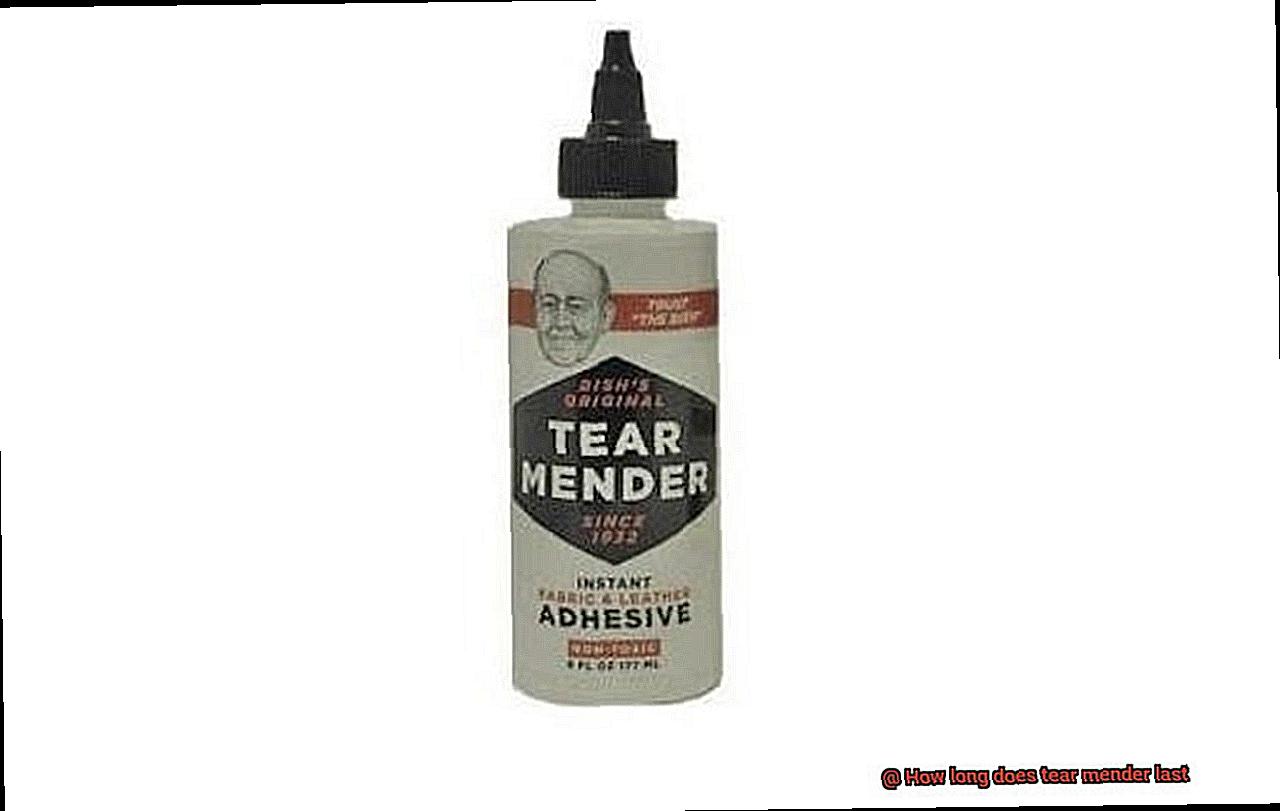
Extreme Temperatures and Moisture:
While Tear Mender is water-resistant, it’s not recommended for materials exposed to prolonged moisture or extreme temperatures. Over time, excessive water or high humidity can weaken the adhesive bond.
Likewise, exposure to heat can soften or melt the adhesive, compromising its effectiveness. For items that will frequently endure these conditions, consider alternative adhesives specifically designed for such environments.
Plastics and Rubber:
Certain types of plastics and rubber have low surface energy, making it challenging for Tear Mender to bond effectively. In these cases, explore alternative adhesives formulated explicitly for bonding plastics and rubber. These specialized adhesives provide stronger bonds and ensure the longevity of your repairs.
Washing and Dry Cleaning:
Tear Mender is not suitable for items that require frequent washing or dry cleaning. The harsh conditions of washing machines or dry cleaning processes can weaken the adhesive bond or even cause complete failure. For repairs on garments or textiles that require regular cleaning, consult a professional who can recommend suitable alternatives.
Delicate or Valuable Items:
When working with delicate or valuable items like antique textiles or heirlooms, caution is paramount. Tear Mender may not be the ideal choice for these items, as they often require specialized care and treatment to preserve their integrity. Before proceeding, consult a professional who can provide expert guidance on the appropriate adhesive for your specific needs.
IxCDaIRT-1U” >
Conclusion
In conclusion, Tear Mender is the ultimate adhesive for fixing tears, holes, and damages in a wide range of materials like fabric, leather, rubber, and vinyl. Its incredible flexibility even after drying makes it the ideal solution for repairing items that need to bend and move without losing their strength.
The longevity of Tear Mender repairs depends on several important factors. The type of material being repaired is a key player, with fabric repairs outlasting leather or vinyl fixes. But that’s not all – proper surface preparation, application technique, and environmental conditions also have a say in how long your repair will hold up. And let’s not forget about regular maintenance and care to keep that bond intact.
To make sure your Tear Mender repair stands the test of time, precision is paramount when preparing surfaces. Thoroughly cleaning them and allowing them to dry completely beforehand is crucial.
Then comes the moment of truth – applying a thin layer of Tear Mender evenly and pressing those surfaces together firmly for an unbreakable bond. And don’t forget to shield your repaired items from extreme temperatures or harsh conditions. Reinforcing the repair when necessary will also help extend its lifespan.
While Tear Mender boasts a permanent bond that can last for years when applied correctly, it’s important to remember that individual results may vary due to different influencing factors. If you ever need to remove it, fear not. You can use heat or adhesive removers specifically designed for this purpose.

